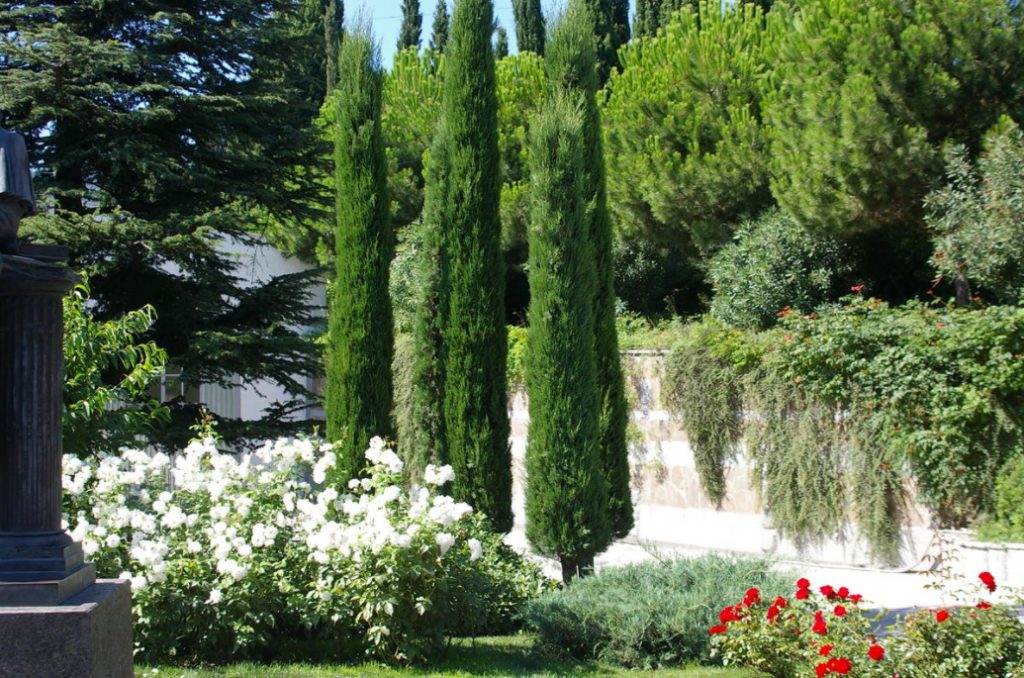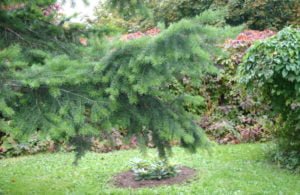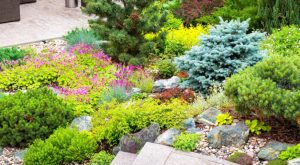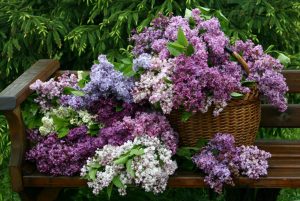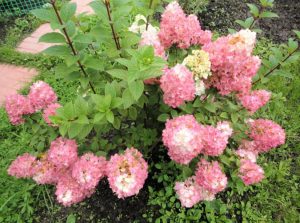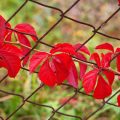We continue our excursion into the wonderful world of exotic plants. And today I am very pleased to introduce you to the charming representatives of the Cupressaceae family. They are one of the most spectacular structure-forming trees.
They are luxurious in a wide variety of compositions, especially in contrast. It is cypress trees that cope with any, often accentuated role (dominant) in small and large groups. They can create picturesque alleys, large tree arrays, spectacular living walls.
Pampered by caring care in parks and cottages, cypress trees adapt with amazing resilience to Spartan living conditions along roads and as inclusions of introduced plants in artificial forest plantations. Without them, the places where these coniferous plants create a unique flavor are already unthinkable. Probably, you have already realized that it will be primarily about cypresses.
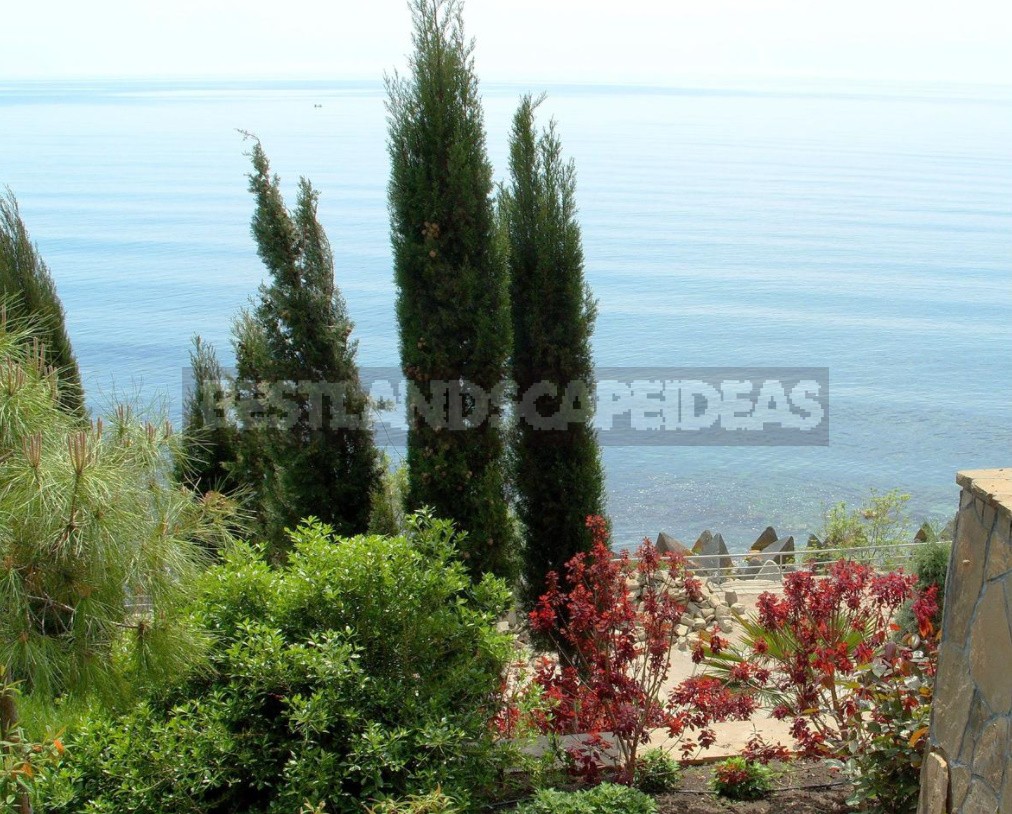
Cupressus
Cupressus are monoecious evergreen trees originating from relatively dry, mostly mountainous areas of Western China, the Himalayas, the Mediterranean, southwestern North America, Mexico and Guatemala. These are extremely drought-resistant (xeromorphic) species with scaly needles and lignified, with characteristic outgrowths, cones similar to a football and maturing in the 2nd year. These plants are interesting with a rich variety of crown shapes, which can be narrowly columnar, and spreading, and weeping.
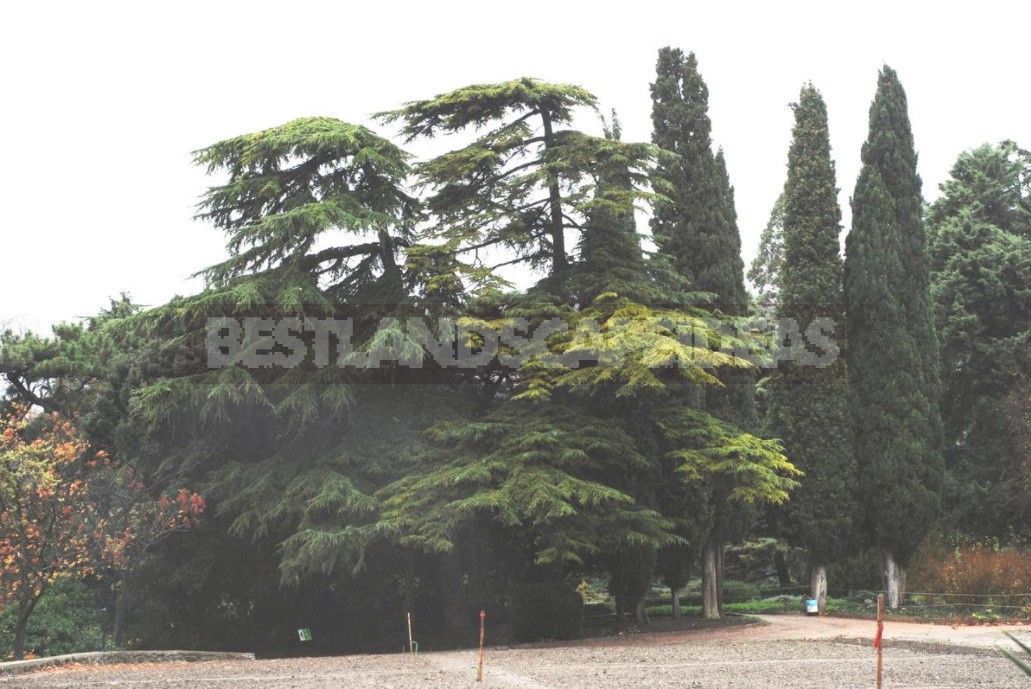
Cypresses are characterized by fragrant needles from dark green to bluish, cross-paired, scaly, usually pressed (sometimes protruding), with resin glands. It is very, very difficult to determine by the type of needles which kind or cultivar of cypress is in front of you. Only narrow specialists who have been engaged only in cypresses all their lives will be able to do this unmistakably. Seeds of cypresses are angular-flattened, brown; retain germination for several years.
Cupressus arizonica
C. arizonica is a beautiful tree up to 20 m tall with a conical crown, gray-brown bark, peeling plates or twisting strips. The needles are bluish-gray. Cones are ovoid, red-brown with a blue coating, up to 2 cm long. Winter hardiness, according to USDA data, corresponds to zones 6-9. It can be grown in a tub culture; in winter, watering should be reduced, placed in a bright room with a temperature of +5 … +8 °C.

Decorative forms:
- var. glabra is a tree 10-15 m high and 4-5 m wide, with reddish-purple bark, blue-gray needles;
- ‘Lutea’ is a tree with a central trunk and a loose crown; needles on young shoots are light green-yellow in color, and on old ones – light green;
- ‘Silver Column’ is a tree with a narrow columnar crown formed by short horizontal branches; needles are gray-green, young — silver-gray.
Cupressus sempervirens
C. sempervirens is a species with a large number of cultivars. It is represented by trees up to 20 m high and 1-6 m wide with a conical, columnar crown. He is originally from the Mediterranean. Thermophilic: according to the USDA, winter hardiness corresponds to zones 7-9. Outside these zones, cypress can be grown in a tub culture; wintering — in a bright place at a temperature of + 5…+8 °C, watering is reduced.
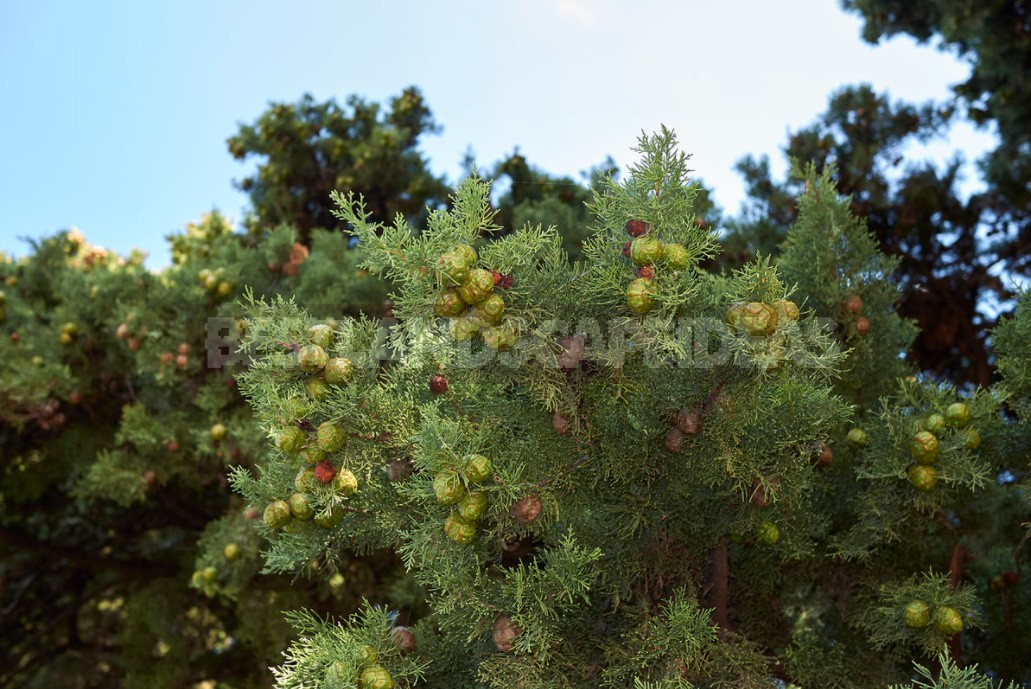
The needles are gray-green, fragrant. Cones are spherical or cylindrical, gray or red-brown, 2-3 cm in diameter.
Decorative forms:
- ‘Stricta’ is the most common columnar shape 15-20 m high, 3 m wide;
- var. indica is a narrow columnar shape with a width of 1-2 m.
Features of care and reproduction
When growing in the open ground in the south, it is important in the first 5 years after planting to regularly water and feed with full mineral fertilizer before growth begins. Only sanitary pruning is applied to cypresses, removing dry branches inside the crown. Garden forms are propagated by cuttings or grafting.
When seed propagation of cypresses, it is important to know that the seeds:
- in culture , they easily hybridize with each other;
- C. arizonica in a cone retain germination for up to 10 years (soil – 40%, laboratory – 60%). It is better to sow in autumn in a cold greenhouse. Before sowing, it is good to stratify at a temperature of + 1…+5°C for 1 month;
- C. sempervirens retain germination in the cone for up to 10 years. They do not require pre-sowing treatment, winter sowing;
- C. duclouxiana is sown in winter in a cold greenhouse. If the soil is frozen, then sow in a cold greenhouse;
- C. funebris is sown in winter in a cold greenhouse;
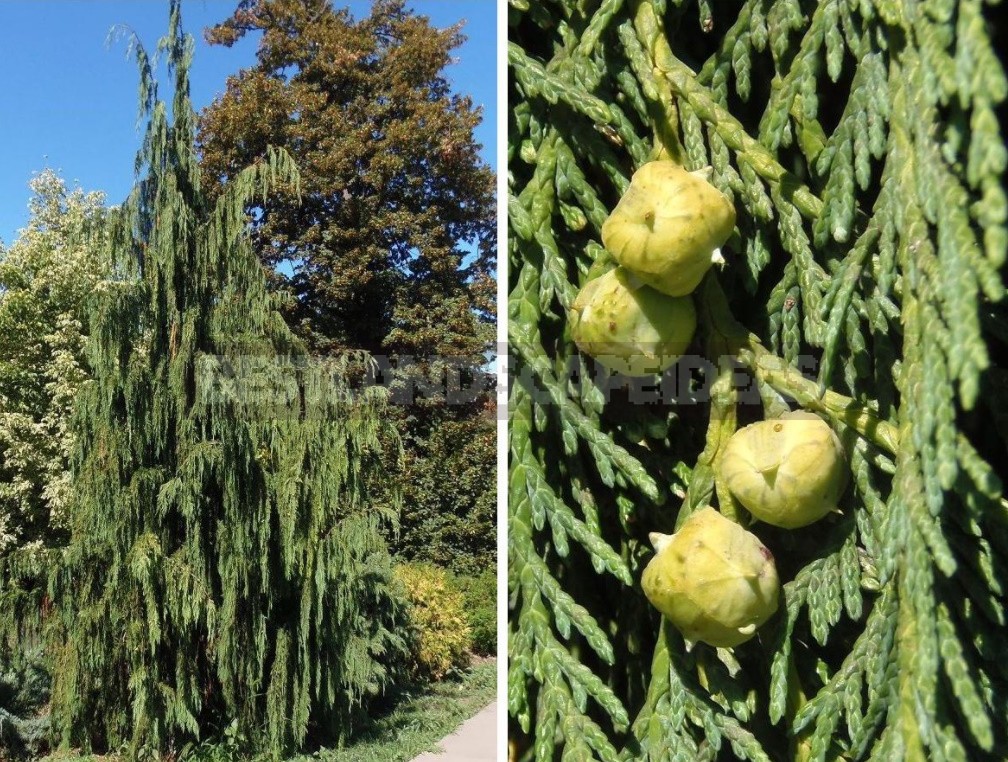
- C. goveniana is stratified at a temperature of +1 before sowing…+5°C for 1 month;
- C. guadalupensis is stratified at a temperature of +1 before sowing…+5 ° C for 1 month;
- C. lusitanica is stratified at a temperature of +1 before sowing…+5 °C for 1 month. Winter sowing;
- C. macnabiana in cones retain germination for up to 8 years. Before sowing, stratified at a temperature of + 1…+5 °C for 1 month. Winter sowing.
Calocedrus and Libocedrus
In addition to cypresses, there are also Calocedrus and Libocedrus in the culture. According to the Encyclopedia of Garden Plants, the genus Calocedrus belongs to the Cupressaceae family.
Calocedrus decurrens
Calocedrus decurrens, syn. Heyderia decurrens, Libocedrus decurrens, is native to western North America. It is a narrow-crowned tree with a height of 20-40 m and a width of 2-9 m, with reddish-brown bark. Winter hardiness, according to USDA data, corresponds to zones 5-8.
The needles are scaly, dark green, shiny, up to 1 cm long. Cones up to 3 cm long, oval-ovate, brown, consist of 3 pairs of tiled scales; mature in late August or early September. Growing fast. There is a beautiful decorative form with yellow-green needles – ‘Aureovariegata’.

Features of care and reproduction
Calocedrus is demanding of soil moisture, although it tolerates short periods of drought. A typical species that currently grows in ancient Gurzuf parks is more shade-tolerant than its variegated form. Propagated by seeds. Ground germination – up to 25%. The depth of seeding is 2-3 cm .
For lovers of exotics, I bring more rare species of Calocedrus and Libocedrus:
- C. formosana. Its winter hardiness, according to USDA data, corresponds to zones 5-8;
- C. macrolepis – winter hardiness, according to USDA data, corresponds to zone 9;
- C. rupestris – its winter hardiness, according to USDA data, corresponds to zone 7;
- L. austrocaledonicus. Winter hardiness, according to USDA data, corresponds to the 10th zone;
- L. bidwillii. Winter hardiness (according to USDA) – zones 7-10;
- L. chevalieri. Winter hardiness (according to USDA data) – 10th zone;
- L. plumosa. Winter hardiness (according to USDA data) — zones 7-10;
- L. Yate (L. yateensis) – winter hardiness, according to USDA data, corresponds to the 9th zone.
Let me remind you that when planning to grow exotic plants in the open ground, it is important to take into account their hardiness zones. With a strong desire to grow them in regions with more severe climatic conditions, it is impossible to do without a tub culture.
